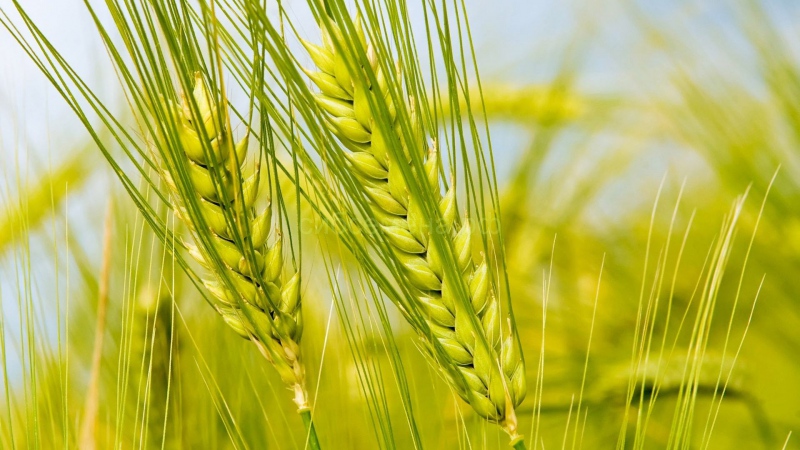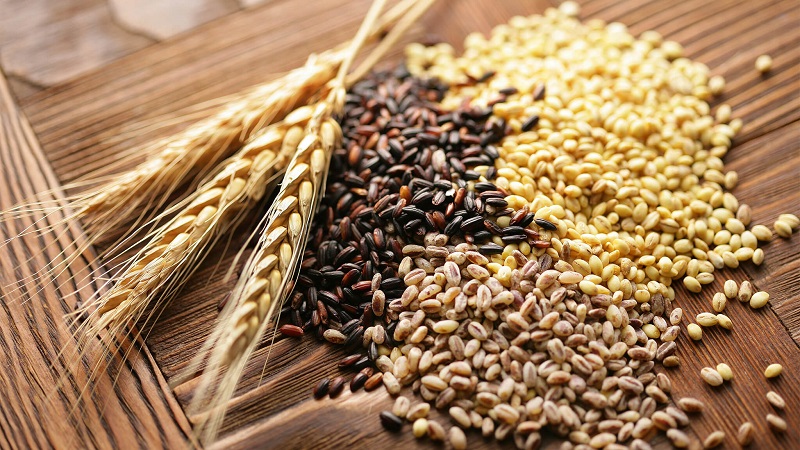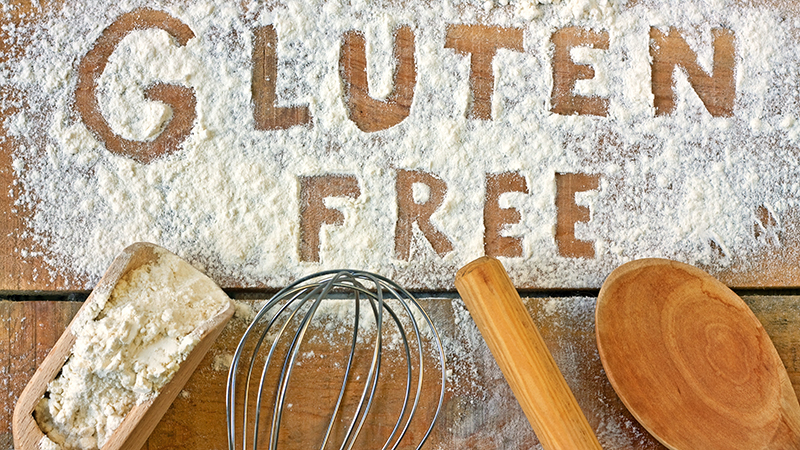Is gluten so scary and is it in rye?
A balanced and healthy diet is the foundation of longevity. Scientists are getting more and more data on what is and how it is, and what to exclude from the menu completely. Gluten has been added to the list of controversial foods along with starch, sugar, and soy protein.
Not everyone knows what gluten is and what it contains. The standard diet of a resident of Russia includes rye bread: 1-3 slices of bread are eaten for one meal. Is there gluten in rye or not? How healthy is it to eat rye products? You will receive detailed answers to all these questions in the article.
The content of the article
The chemical composition of rye
Depending on the growing conditions and varieties, rye grains contain different amounts of nutrients, biologically active components and trace elements.

Average nutrient content of rye grains:
- starch (53-63%);
- slimy carbohydrates - gum sugar (2.5-5%), levulezans (up to 3%);
- sucrose (4.3-6.6%);
- fiber (2.04-3.32%);
- vegetable fats (1.7-2%);
- vegetable protein (8.09-19.13%).
Rye protein is a mixture of albumin, gliadin, secalin, globulin and glutelin.
reference... Gluten is a group of proteins. Of the gluten proteins, rye contains gliadin, sekalin and glutelin.
Mineral components of rye grains:
- potassium compounds;
- sodium salts;
- calcium;
- magnesium;
- phosphorus;
- sulfur;
- silicon;
- chloride salts.
Grain germs and mature grains differ in their vitamin content. The embryos contain B vitamins, vitamin E and vitamin A. 1 kg of non-germinated grains contains:
- vitamin B1 - 2-7.8 mg;
- vitamin B2 - 1.5-2.9 mg;
- vitamin PP - 4.1-13.4 mg;
- vitamin B5 - 10.4 mg.
During the cooking process, during the heat treatment of rye grains, their carbohydrate and protein composition changes, the amount of vitamins and microelements decreases.
Nutrient content of rye products per 100 g:
| Rye product | Proteins, g | Fat, g | Carbohydrates, g | Sugar, g | Fiber, g | Calorie content, kcal |
| Rye flour | 9,82 | 1,33 | 76,68 | 0,9 | 8,0 | 357 |
| Rye bread | 7,9 | 1,3 | 82,2 | 1,1 | 16,5 | 366 |
| Rye bread | 8,5 | 3,3 | 48,3 | 3,9 | 5,8 | 259 |
| Rye flakes | 8,0 | 1,5 | 71,0 | 0,5 | 0 | 340 |
| Rye bran | 11,2 | 3,2 | 32,0 | 8,7 | 43,6 | 221 |
When asked if rye contains gluten, the answer is yes. And not only whole grains are rich in gluten, but also rye-based products.
The more protein a food contains, the more gluten it contains. Gluten is slightly degraded to amino acids when heated, unlike other proteins in cereals. Breads, crisps and cereals contain more gluten than rye products cooked without prolonged heating.
Gluten-containing foods
Gluten, known in the scientific community as gluten (from the Latin "gluten" - glue), is found in the seeds of cereals. Various types of bread, pasta, bakery products contain gluten in the amount of 10-15% of dry weight.
Gluten is added to ice cream, ketchup and sauces in factories to give the products a thick consistency. Gluten called "seitan" is found in vegetarian and vegan dishes, and is used in oriental cooking.

Products containing gluten:
- cereals - wheat, rye, barley, oats, white uncooked rice;
- cereal cereals;
- baked goods and breaded products;
- pasta;
- sausages - sausages, sausages, cutlets;
- soy products;
- sauces - mayonnaise, ketchup, mustard;
- crab sticks;
- dressings and seasonings - bouillon cubes, universal seasonings, confectionery powders;
- tomato paste and curls with tomato paste;
- yoghurts, fermented baked milk, snowball, kefir and cottage cheese mass of industrial production;
- ice cream (except for fruit ice);
- nectars made from concentrates;
- sports protein nutrition;
- a plant product that imitates condensed milk.
Traces of gluten are found in vegetable and fruit purees for baby food, spreads (butter substitute), processed cheeses and industrial candied fruits. Gluten is artificially added to these products to improve the appearance of the products.
Gluten content in cereals cultures:
- wheat (up to 80%);
- barley (up to 23%);
- rye (up to 16%).
Processed foods will have different metrics.
Average gluten content per 100 g of food:
- wheat flour - 3-5 g;
- rye flour - 2-2.5 g;
- pearl barley - 2.2-2.8 g;
- oatmeal - 2-2.25 g;
- white bread - 1.62 g;
- rye bread - 1.05 g;
- tomato ketchup - 0.2-0.25 g;
- dry pasta - 10-11.5 g;
- semolina (dry) - 45-50 g.
Gluten content in rye
Rye and foods containing this grain contain gluten proteins, like all grains. Ripe dry grains contain up to 16% gluten. Rye flour - 2-2.5%, rye bread - about 1%.
To reduce the gluten content of foods, the rye is washed with hot water before cooking. Water dissolves gluten and flushes it out of the grains.
With bread, loaves, bran and cereal, nothing can be done. These products are simply excluded from the menu for gluten intolerance.
The benefits and harms of gluten
If you are a healthy person, you should not be afraid of gluten. On the contrary, gluten is useful for the prevention of many diseases of the gastrointestinal tract and metabolic disorders.

Benefits of gluten:
- Gluten envelops the walls of the stomach and intestines, protecting against the aggressive action of acids, alkalis and other irritants, which is useful for the prevention and treatment of gastritis and peptic ulcer disease.
- Gluten is a mixture of high-calorie proteins that help strengthen bones, regenerate tissues, increase hemoglobin levels in case of hyperchromic anemia, and maintain immunity.
- In diabetes, gluten proteins provide fast and long-lasting satiety, which makes it easier to tolerate the reduction in carbohydrates in the diet.
- Nutritious plant protein will restore liver function after injury and intoxication.
- Gluten is a source of essential amino acids, building blocks of muscles and body enzymes.
Gluten is only dangerous for people with genetic gluten intolerance, a condition called celiac disease. This disease is inherited. Patients with celiac disease are prescribed a gluten-free diet.
Another unpleasant property of gluten proteins is the ability to cause allergies in patients with unstable immune status. Allergy occurs, as a rule, only to one type of gluten protein: if you are allergic to wheat gluten, it does not manifest itself when eating products from rye, barley and other cereals. A gluten allergy is temporary. More often it manifests itself in childhood in children with diathesis and stops after puberty and stabilization of immunity.
Danger of celiac disease
Doctors distinguish between true celiac disease and celiac disease. True celiac disease is inherited in a dominant manner, that is, if one of the parents had gluten intolerance, all children will have it.
True celiac disease is not cured, patients are forced to follow a diet throughout their lives. Celiac disease develops in the absence of a genetic predisposition to the disease.
Causes of celiac disease:
- anomalies in the development of the small intestine;
- intestinal infections;
- long-term use of antibiotics and chemotherapy drugs;
- small bowel cancer.
Celiac disease disappears after the underlying disease is cured and bowel function normalizes.
With these diseases, the absorption of nutrients, vitamins and trace elements consumed with food is impaired. This is the reason for the development of concomitant pathologies:
- fragility of bones, muscle dystrophy, including cardiac and vascular muscles;
- hypovitaminosis;
- dystrophy of nerve fibers, dysfunction of the brain and spinal cord;
- anemia;
- loss of teeth, bleeding gums;
- hair loss, brittle nails, dry skin;
- decreased immunity, susceptibility to infections.
If a gluten-free diet is not followed, patients with celiac disease and celiac disease, after the development of concomitant diseases and dystrophy, die from severe infectious diseases, since the body without nutrients is unable to defend itself against pathogenic microorganisms.
How to identify gluten intolerance
If one of your parents has celiac disease, you also have celiac disease.
Attention! If you find one or more symptoms of celiac disease, seek medical attention to clarify the diagnosis.
Gluten Intolerance Symptoms:
- increased urge to defecate;
- stools copious, frothy, light, with a pungent odor;
- stool problems do not disappear when taking medications that normalize bowel function;
- lethargy, pallor is observed;
- body weight decreases, appetite is lost;
- insomnia, neurosis, stress appears;
- symptoms of hypovitaminosis are observed - problems with the skin, hair, bleeding gums, tooth loss;
- cases of infectious diseases are increasing;
- fragility of bones increases.
Gluten intolerance can be allergic in nature. In this case, allergy symptoms are observed after ingestion of foods with gluten.
Gluten Allergy Symptoms:
- itchy skin;
- redness, skin rash;
- increased salivation, secretion of nasal mucus;
- feeling of abdominal discomfort after eating gluten-free foods.
With allergies, normal stool remains, there are no signs of hypovitaminosis and weakening of the immune system. Gluten allergy, like other types of allergic diseases, is stopped by taking anti-allergic drugs.
Attention! To clarify the type of allergy and the appointment of adequate treatment, consult an immunologist.
What doctors say about gluten
Experts do not recognize the dangers of eating gluten-containing foods for those who are not celiac or allergic to gluten.
Reilly N., Pediatric Gastroenterologist, Columbia University New York Medical Center: “A total elimination of gluten is required only for celiac patients. For healthy people, gluten serves as food. Gluten-free diets for healthy people will cause obesity, vitamin and trace element deficiencies. "
Alexey P., gastroenterologist: “Gluten is not poison. Gluten intake problems are exaggerated. It cannot harm people without celiac disease and gluten allergy. "
Marina A, dietitian, allergist-immunologist: “Unless there is a genetic disorder such as celiac disease, gluten intolerance in adults is temporary. After normalization of the digestive tract, the diet is not required. "
Read also:
What is Arborio rice and in what dishes it is used.
Conclusion
As with all cereals, rye contains gluten. But you shouldn't avoid rye foods. Gluten has health benefits for people without a diagnosis of celiac disease or gluten allergy.
The harm of gluten proteins is exaggerated. Fear for the safety of health gave rise to myths and tales about this substance.
Without a medical examination, you should not diagnose yourself with gluten intolerance, as well as go on a gluten-free diet if you have not received instructions from your doctors. The diet must be varied to maintain health.